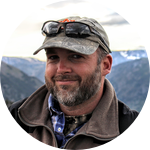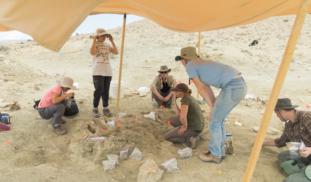Please wait...
About This Project
This is an invitation to work alongside paleontologists for a week (or more!) this summer as we collect, excavate and document the fossilized remains of ecosystems that existed hundreds of millions of years ago. The Bighorn Basin is famously fossil-rich. In previous years volunteers helped excavate T. rex and Triceratops fossils from the Cretaceous and Diplodocus and Allosaurs from the late Jurassic Period rocks. Join our team and contribute to decades-long research projects!

Browse Other Projects on Experiment
Related Projects
Uncovering a new era of climate change during the Ice Age of the Black Hills
Mammoth Site scientists, partners, and volunteers are on a mission to understand climate change in the Black...
Join Bighorn Basin Paleontological Institute's 2018 Field Expedition
Work alongside paleontologists as we collect, excavate and document the fossilized remains of the ancient...
Bighorn Basin Paleontological Institute's 2017 Field Expedition
This is an invitation to work alongside paleontologists for a week (or more!) this summer as we collect...



